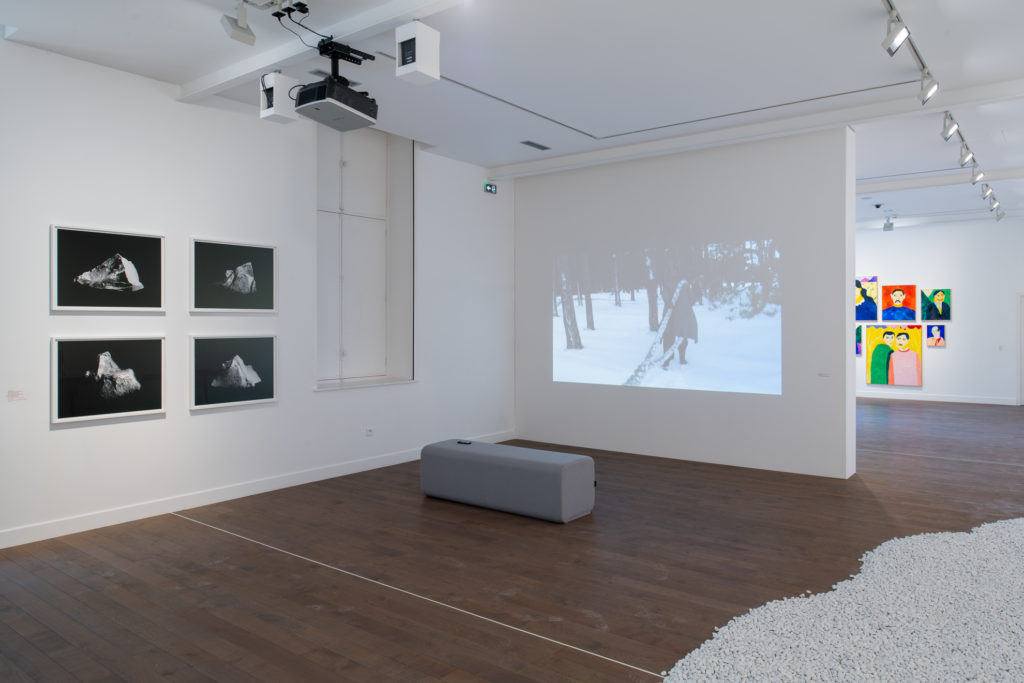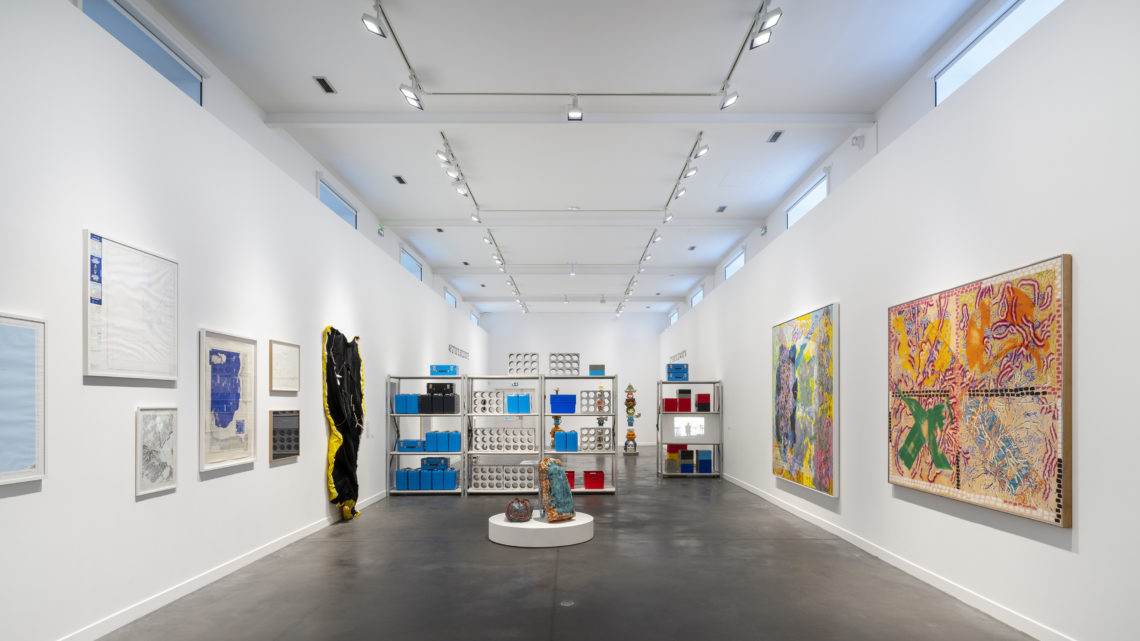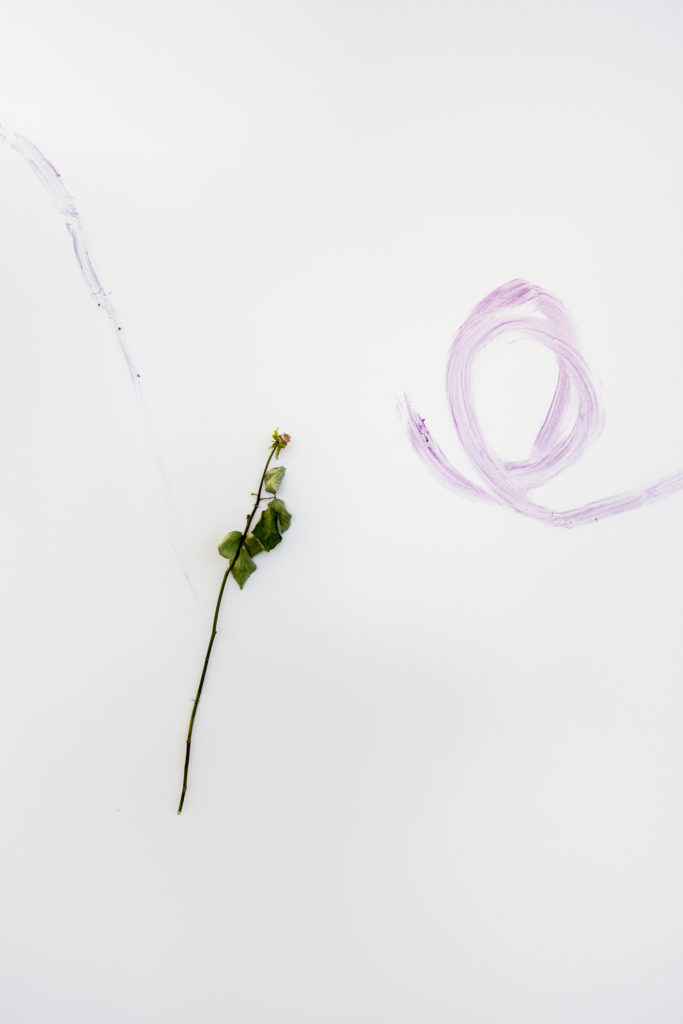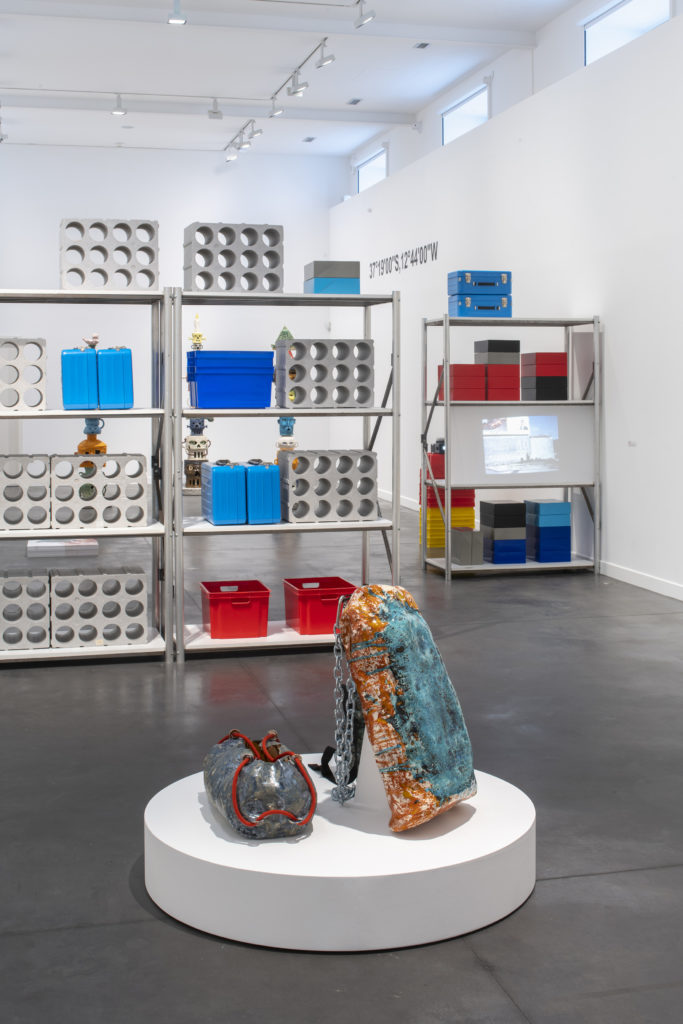Following in the footsteps of René Daumal’s unfinished novel, the Frac Champagne-Ardenne museum has set out to conquer the “Monts Analogues”. The exhibition takes the form of an expedition, with over 40 artists coming together to contribute their own interpretations and takes on this text, that perches somewhere between alpine adventure and initiation quest. On display until the 23rd December.
A comma marks the end. A dot too curved to be a full stop; but that is how the novel ends, without really ending. First published in 1952, Le Mont Analogue by René Daumal is a book that describes a journey undertaken by a group of friends, artists, doctors, intellectuals, literaries and mountaineers, on a quest to discover Mount Analogue. It is an inaccessible mountain in the Southern hemisphere, hidden amongst the waters of the Pacific, whose base is hidden from view, but whose summit would lead to the divine. A quest towards the Impossible, like the name of the yacht they board at the start of their voyage.

Written between 1939 and 1944, this epic tale came to a premature conclusion, with a comma at its end. Adding to the philosophy of the novel, the symbol marks the end of the text as well as of René Daumal, who died in 1944 before finishing his sentence, having contracted tuberculosis aged just 36. The punctuation mark leaves the adventure suspended, like a climbing hold, a moment’s breath before continuing the ascent anew, the reader now finding themselves alone, at the head of the roped party. Resonating with people from all walks of life, René Daumal’s tale is passed on from hand to hand, affecting the psychedelic counterculture of the 60s as much as the world of politicians, with mountaineering enthusiasts, artists, philosophers and scientists in between.
A contemporary art expedition
Following the trajectory of the novel’s different stages, the Frac Champagne-Ardenne’s exhibition strives to bring to life Daumal’s depiction of the initiation quest. Arranged over two floors, the works alternately immerse us in the different states of mind the text leads us through. “The idea was to follow the book in terms of the staging and organisation of the exhibition. A mountain expedition in itself. There are different stages along the way. It starts with the preparation, the accessories, the psychological conditioning, next the ascent and then you find yourself on the mountain” explains Sébastien Bourse, audience and diffusion manager for the venue. Choosing to name the exhibition by pluralising Le Mont Analogue — the original French title — allows the story to reach even greater heights, letting its influence and heritage be expressed alongside it. “The aim was to show the plurality of views of Le Mont Analogue — a book that has hugely inspired the artists. Each one of them has made it a bit their own, appropriated it. It was a way to show the diverse range of interpretations there have been of this text” adds Charlotte Cabon-Abily, head of exhibitions and artistic projects at the Frac. Commissioned by Boris Bergmann, author and enthusiast of Daumal’s work, this is the first major exhibition to be dedicated to him. Deeply entrenched in the culture of Reims, Daumal is mainly recognised for his preliminary work, that he began during his studies in Reims, within the clan the Phrères Simplistes and then the journal Le Grand Jeu — a rival group to the surrealists.

To the impossible, and beyond
At the start of the exhibition we are in the planning phase, preparing for the expedition; here we see Jimmie Durham’s work: The stick to mark the centre of the world in Reims. It is a pilgrim’s stick, vital for walking, like an invitation on a journey, and which — despite that — plays on the ambivalence of its name and its usefulness. It serves here to mark the centre of the world in Reims. Equipped with a small mirror, it questions its place at any given moment, but also our own. Reflecting beyond our image, it encourages us to look elsewhere, to cast narcissism aside and crush the idea that we are the centre of our own universe. Next, Quentin Derouet’s work invites us to begin the ascent, up to the second floor, by following the loops left on the wall by the pigment from his rose, showing us the way to go. This is also a reference to the bitter rose, a flower with mystical powers that grows on Mount Analogue. The upper floor is the floor of elevation, of the spiritual. It is drier, rocky. It is the mountain. Through his different Mount Analogues, Julien Discrit reveals to us their plurality. A mountain? Or rather small stones transformed into mountains under his lens. In so doing, he demonstrates the ability of this mountain to conjure up an entire imaginary world, to embody several concepts, several forms. Mount Analogue is just a letter, an epistolary exchange at the beginning of the novel, that becomes an expedition.

An analogy of spiritual elevation, ascension towards knowledge of the world and of oneself, Daumal’s tale is a reflection on the various slopes that make up a mountain, many and winding. Everyone has their own mountain to climb; takes their own path to the top. When thinking about his ascent, Daumal did not envisage it as a solitary pursuit, but rather a group one, recalling that Le Mont Analogue is, above all, a collective narrative, a composite human adventure, as depicted today in the exhibition. This unifying spirit is there in the author’s words and is what is picked up on by the Frac Champagne-Ardenne: “The fact that there are two of us changes everything; it is not that the task becomes twice as easy: but that the impossible becomes possible. ”







